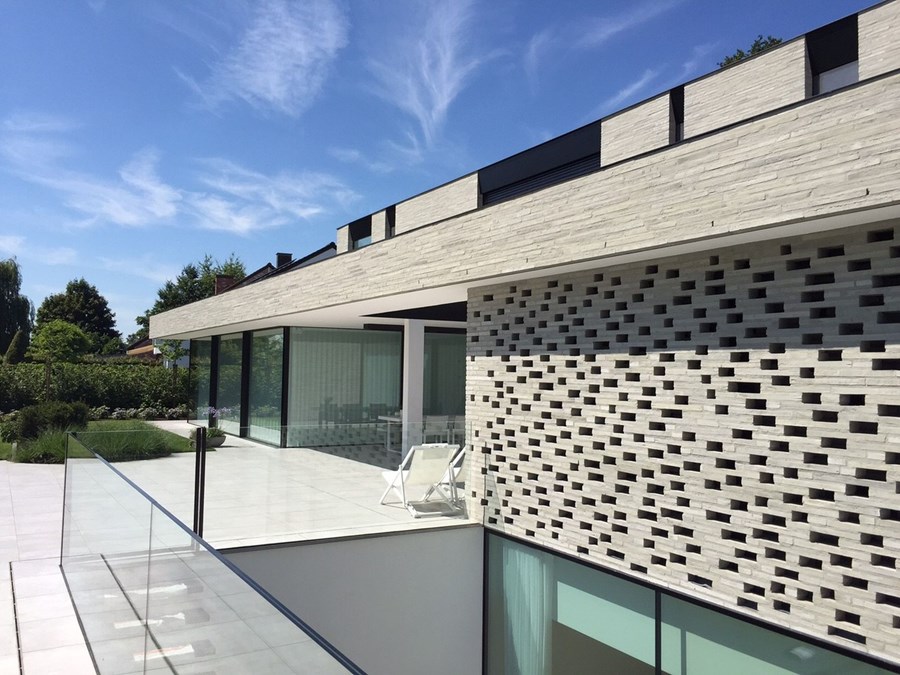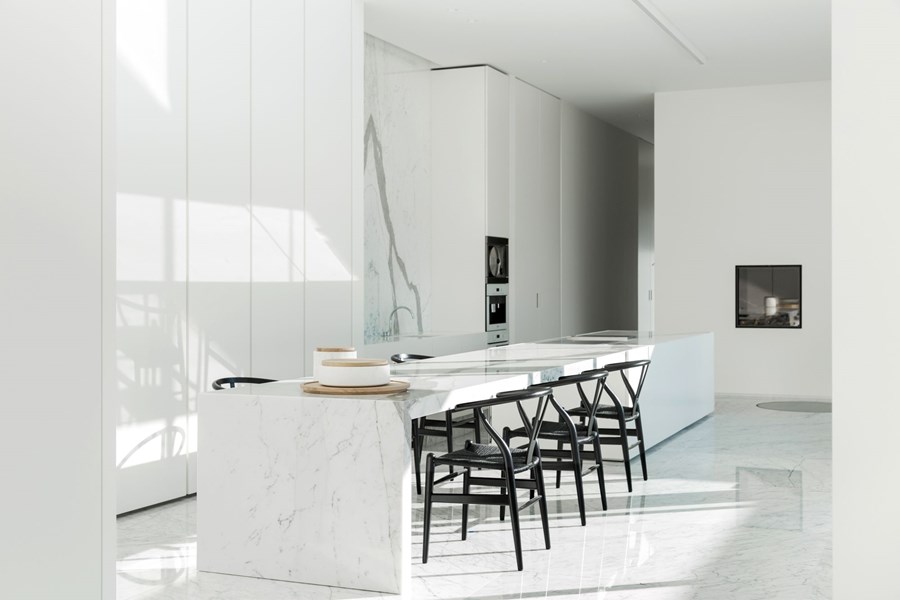House B Hasselt is a project designed by UAU collectiv, the surrounding landscape of the river Demer and the program gave rise to a strict and straight-lined basic volume in which patios are recessed and boundaries between inside and outside appear to become blurred. These patios are experienced as “positive” outdoor areas that spatially and visually show a strong link with the indoor areas. The architecture is designed by an interplay of surfaces and volumes that is created where walls, window surfaces and floating volumes touch at the corners. The surprising volumetry has its strength in the degree of execution on the level of detailing.
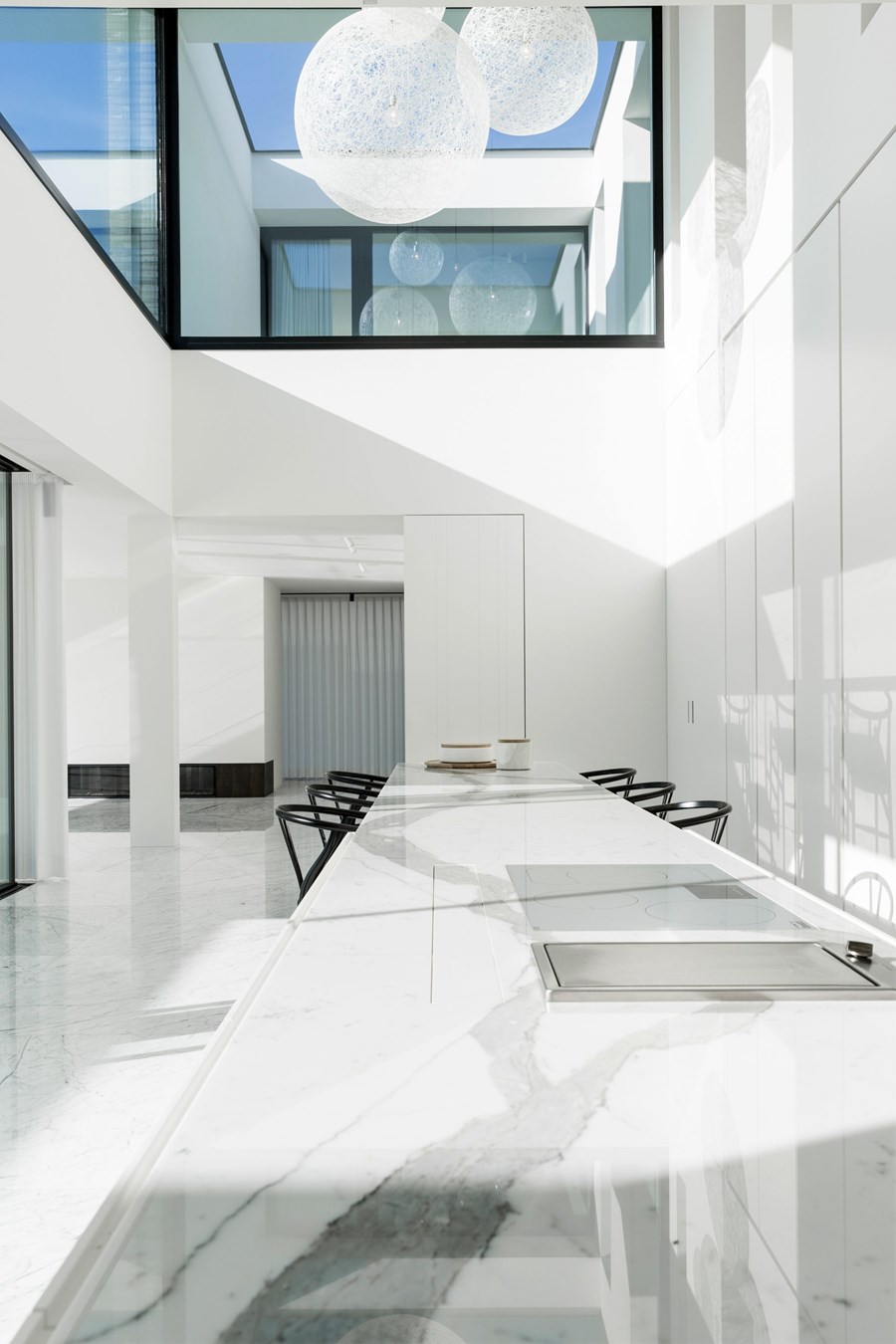
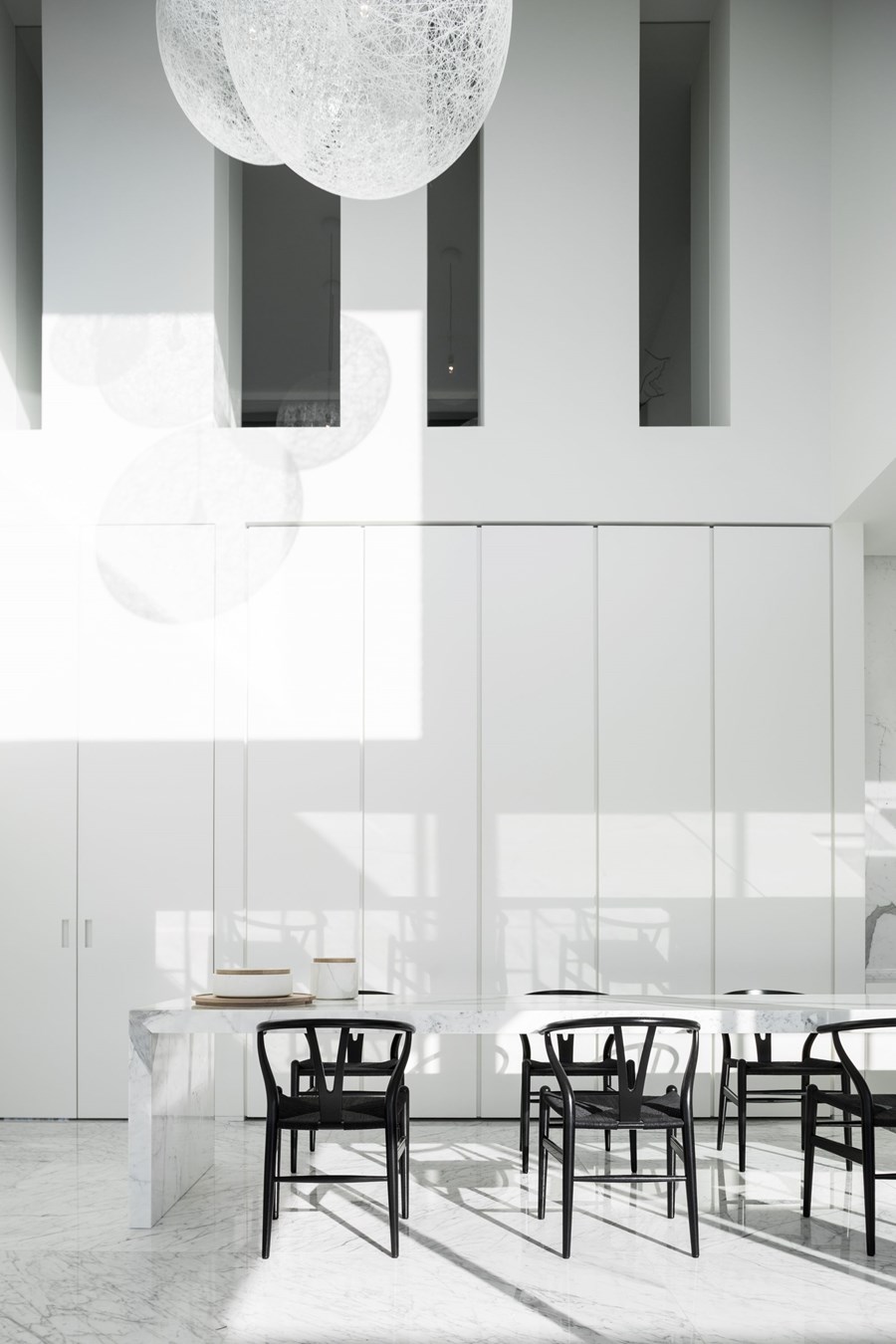
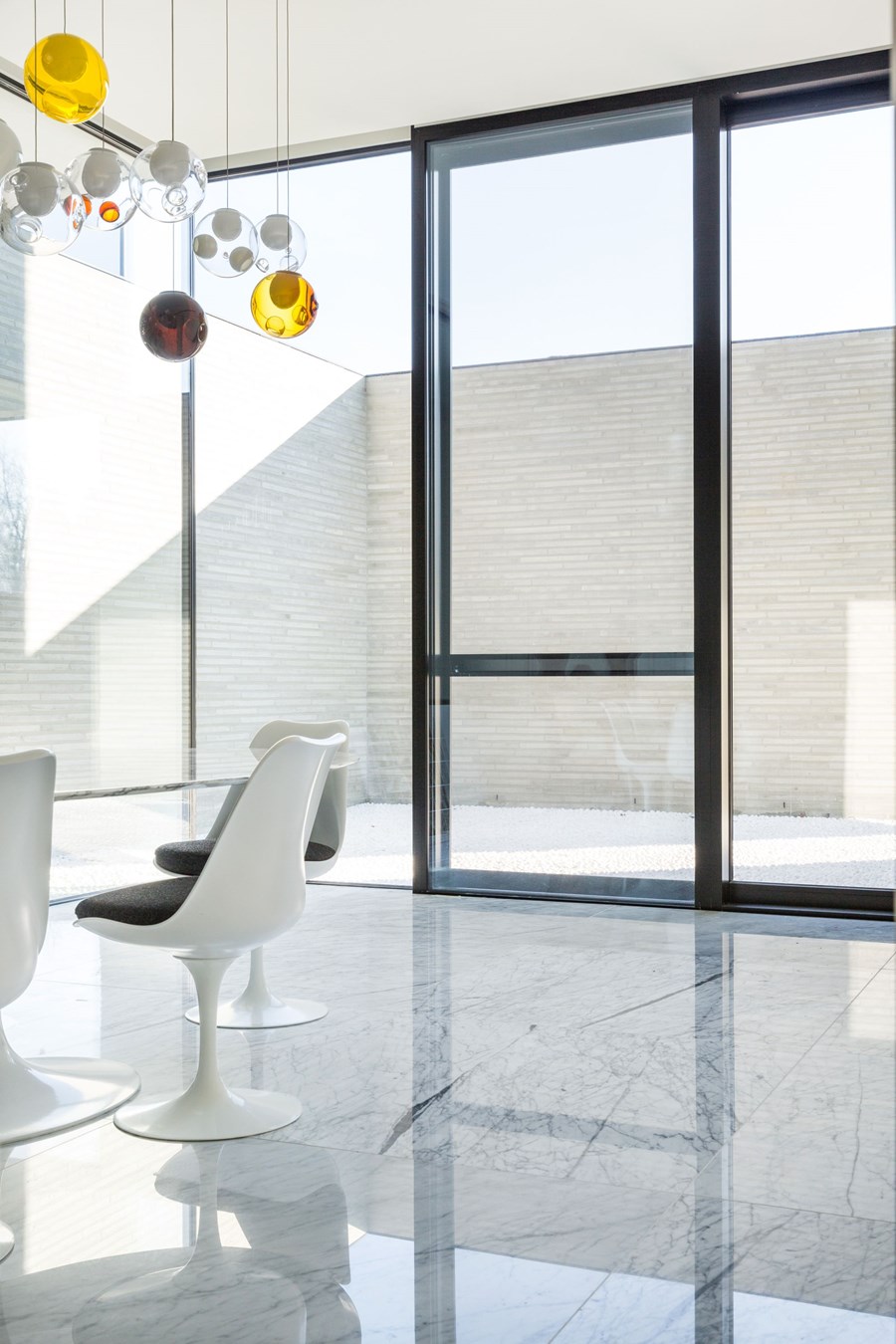
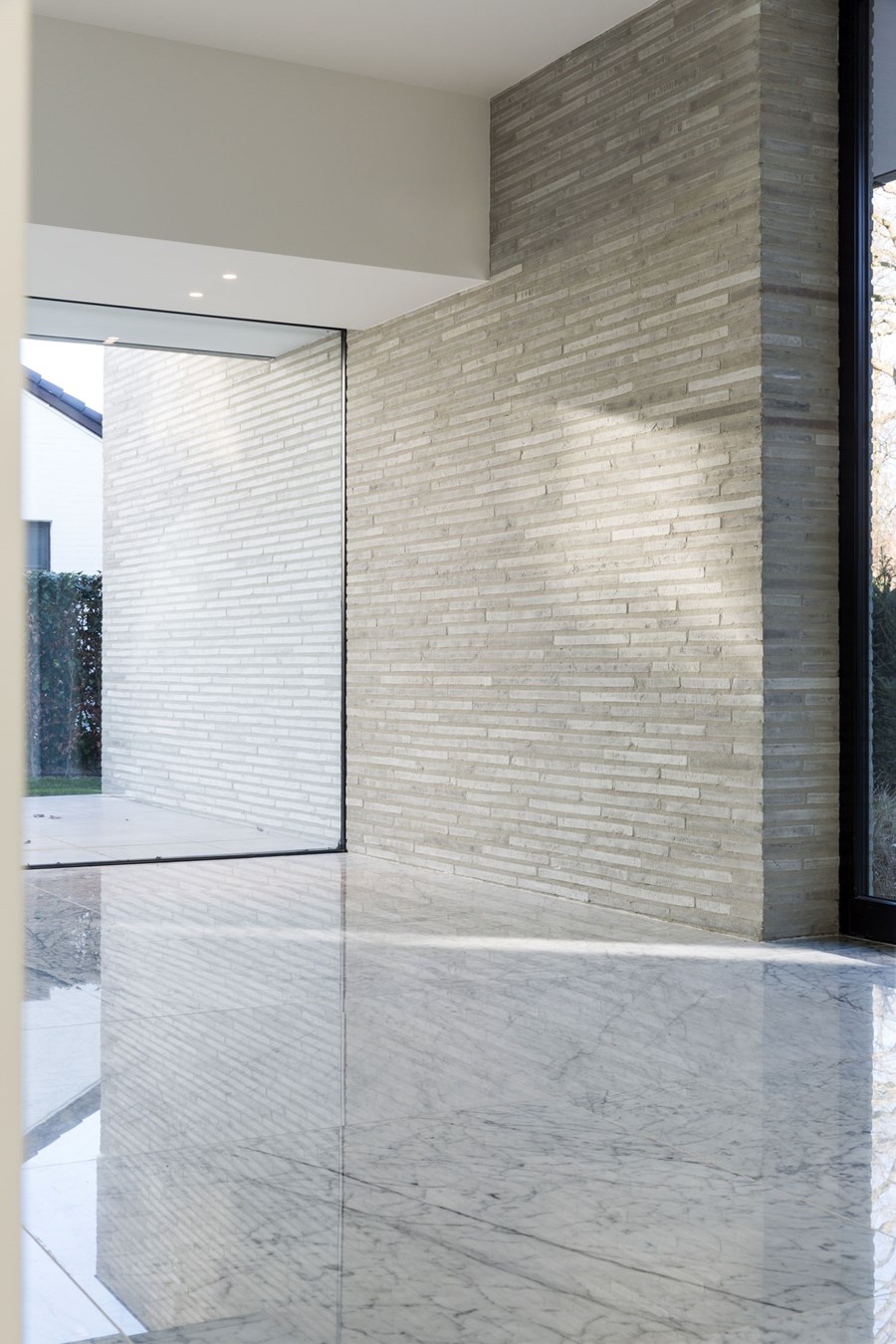
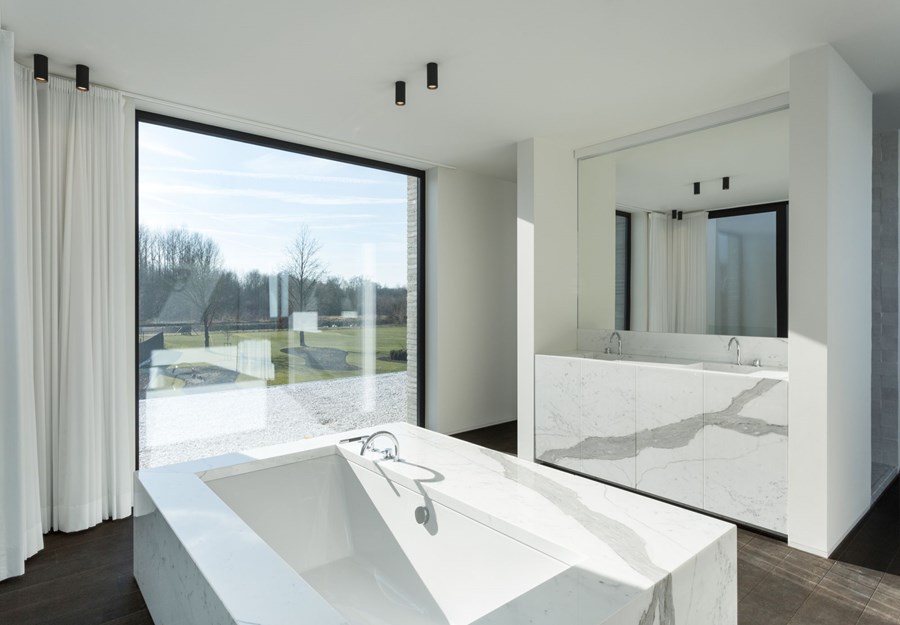
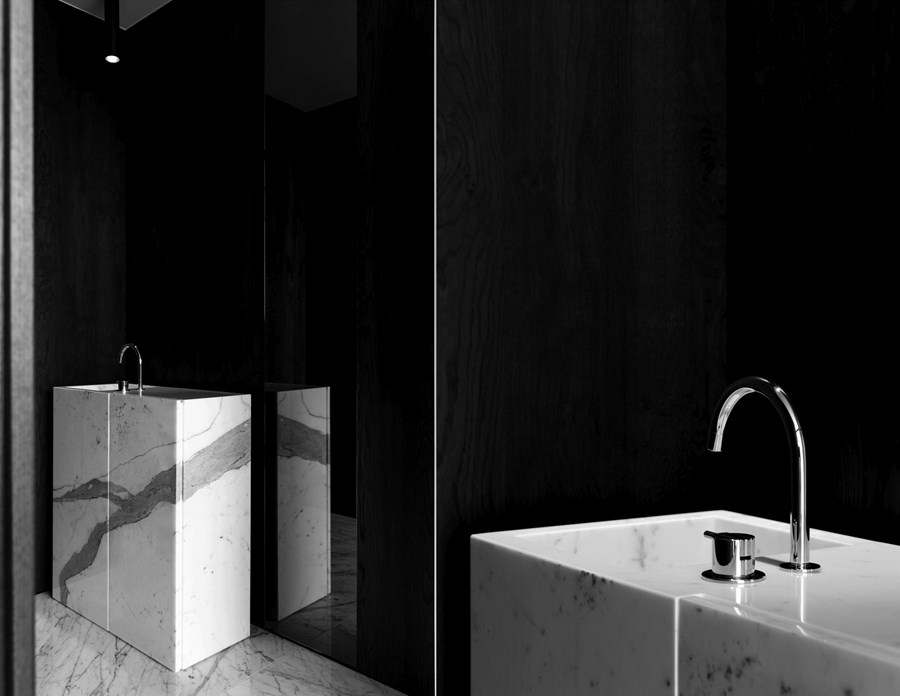
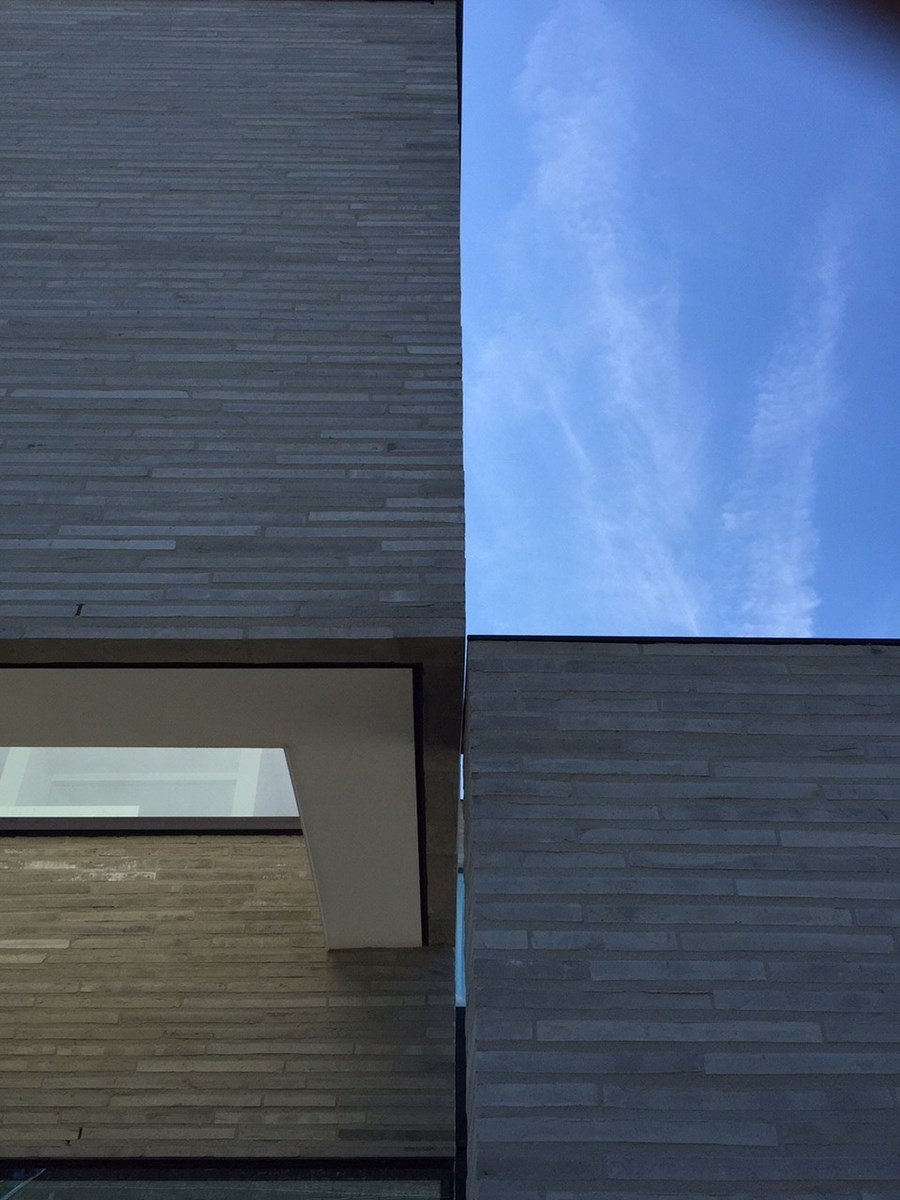
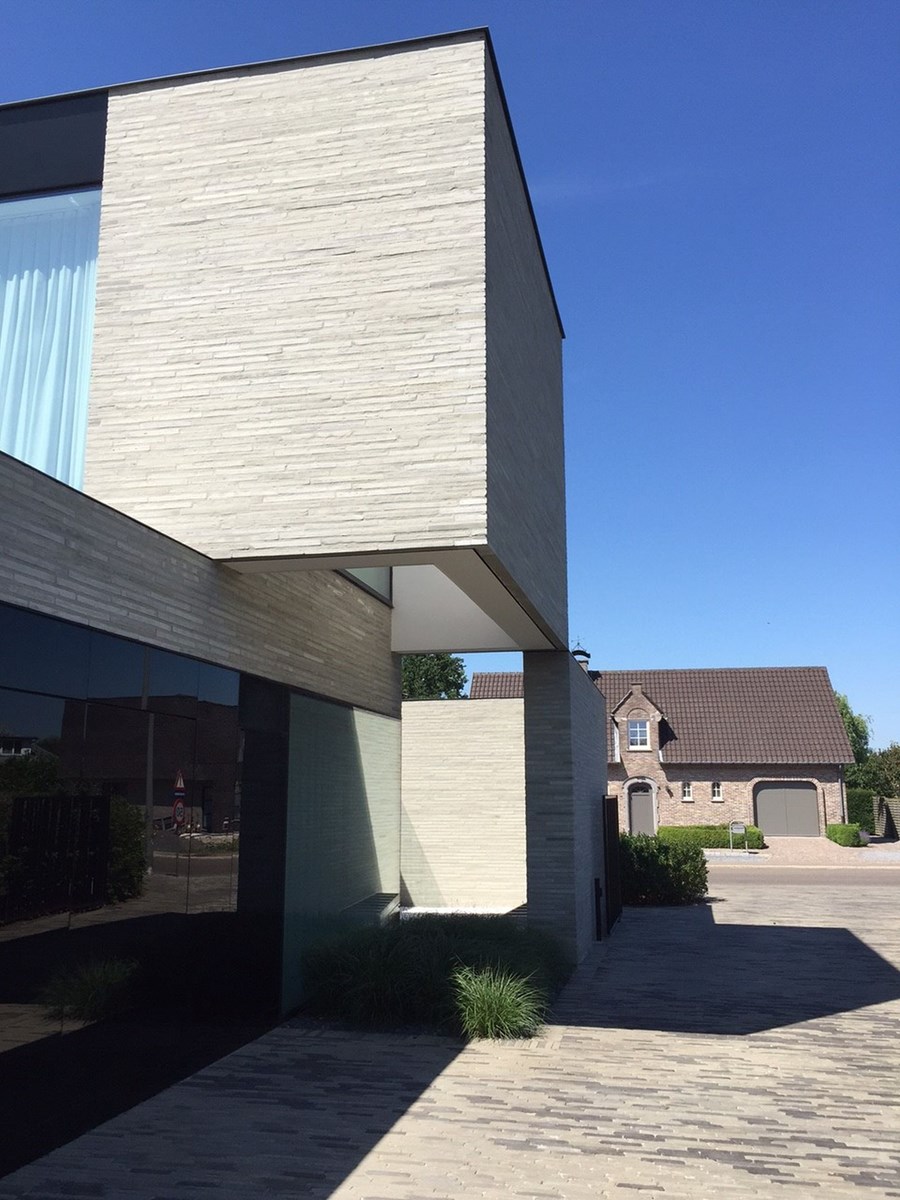


The horizontality of the volume is intensified by the exceptionally elongated size of the brickwork. At well-considered positions in front and rear wall the exterior wall is partially perforated, which provides the rear spaces with filtered light and views without losing the unity in shape and material of the outside volume.
The subtle placing of division walls in an open plan is the translation of the program that comprises a single-family home with a practice area. The home is designed seemingly closed at the street side in order to preserve maximum privacy, but the professional practice has a clear access where the house front “unfolds”. The living and working areas open from inside to the patios, the garden area and the river behind it, which ensures a maximum openness and an agreeable living and working quality with a lot of daylight. The demand for privacy on the floor is responded to by connecting the bedrooms around enclosed patios.
The openness of the patio concept is strengthened by the application of voids that connect to the patios and window surfaces. This way interesting lines of sight are created throughout the home which give the home an extra dimension. This patio concept is rigorously continued on all levels, so that even in the cellar each space is linked to a patio.
An optimal perception of the surroundings, not only outside, but also inside, forms the expression of the home and originates in the execution of the smallest detail. In this way the interior concept was also carefully designed based on the same vision.
Discretely a bright interior was chosen where natural materials, marble and wood set the central theme. Exceptional types of Carrara marble from Italy were selected and used on the floor, but also expertly processed in the bathrooms and kitchen into unique interior elements, as if pieces of art. The use of materials was continued in the patios where terraces of Carrara boulders intensify the spatial continuity. The
integration of lighting in the interior also responds to the architectural concept. Upon entering a black lighting alcove in the ceiling is conceptually used as an accent and follows the lines of the routing. Built-in wall closets integrate in the overall concept as spatial elements with attention to surprising and personal details that affect the emotion of the entire living experience.
Photos by UAU collectiv


